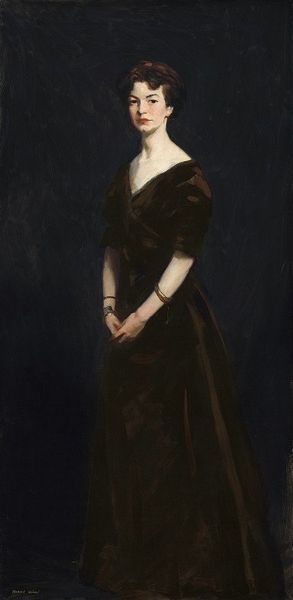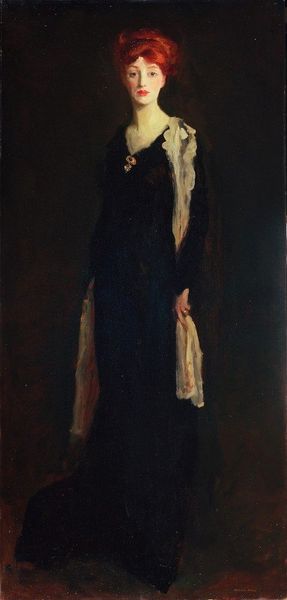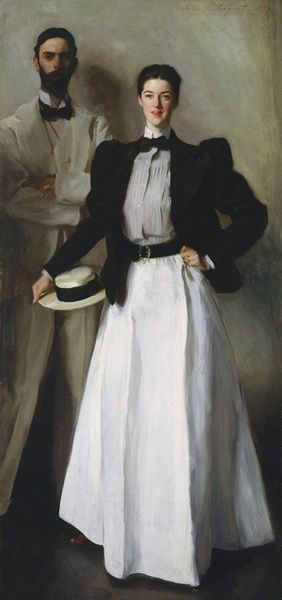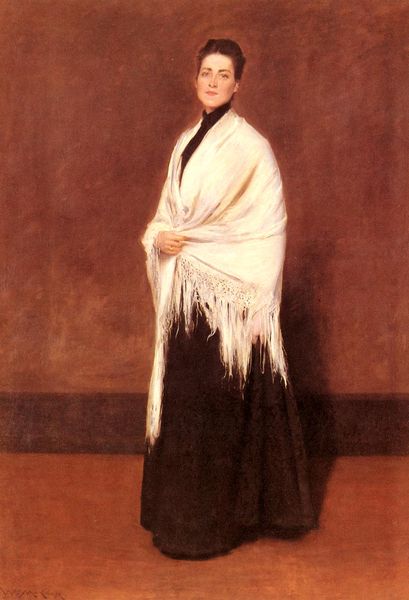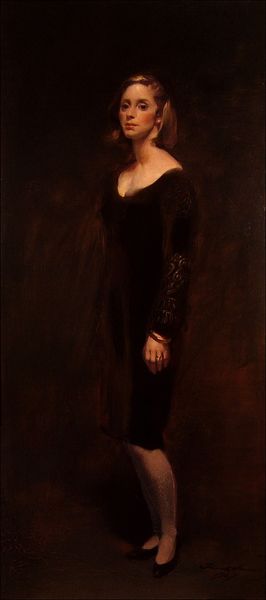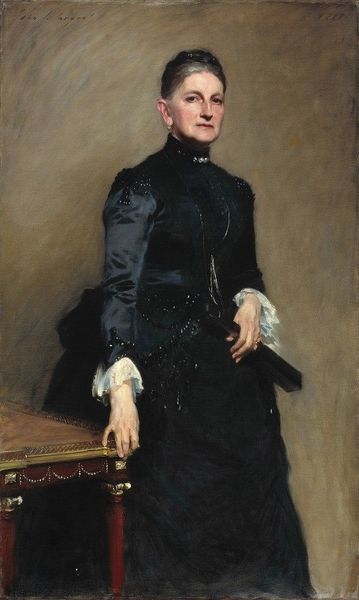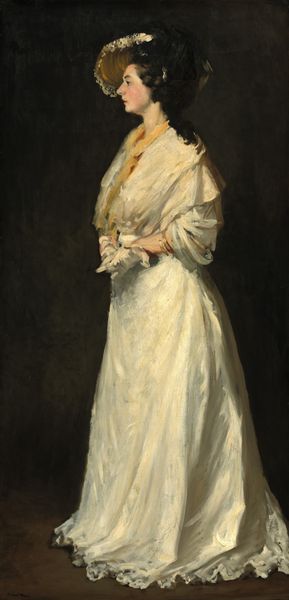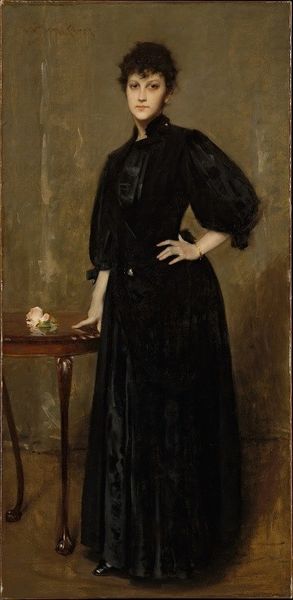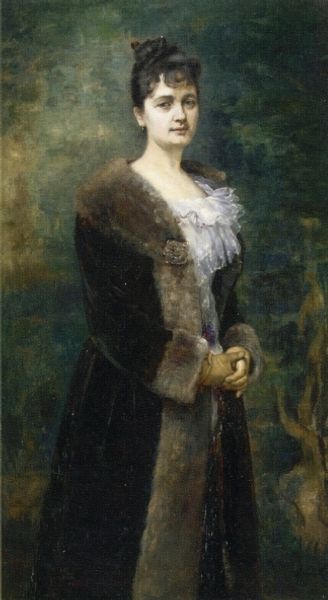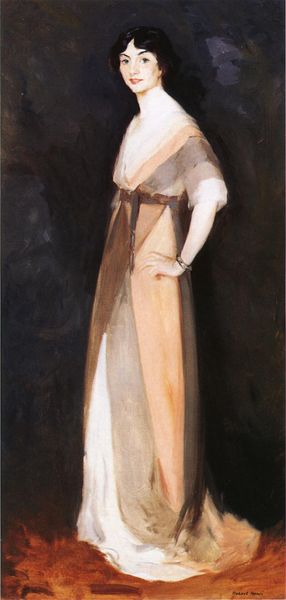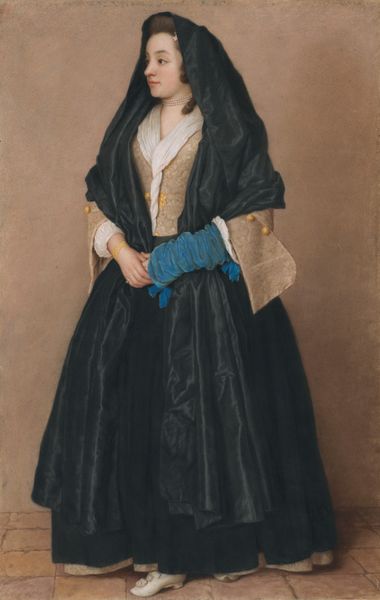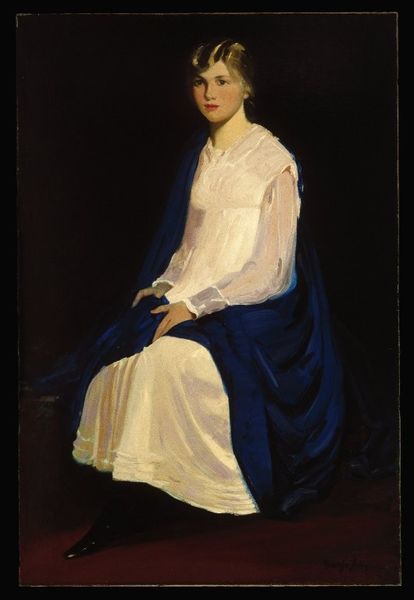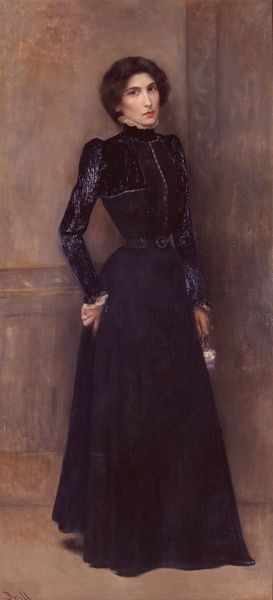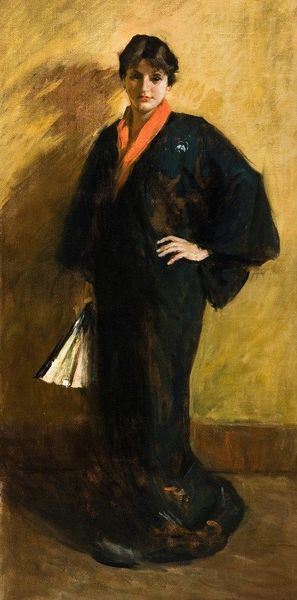
painting, oil-paint, oil-on-canvas
#
portrait
#
portrait
#
painting
#
oil-paint
#
figuration
#
ashcan-school
#
united-states
#
oil-on-canvas
#
modernism
#
realism
Dimensions: 195.6 × 97.8 cm (77 × 38 1/2 in.)
Copyright: Public Domain
Editor: Here we have Robert Henri's "Young Woman in Black," painted in 1902 and rendered in oil on canvas. The immediate impression is one of elegant constraint; a study in dark tonalities punctuated by carefully placed accents of white and flesh tones. How do you read this composition? Curator: Observe the subtle interplay between light and shadow. The composition, although seemingly straightforward, employs a sophisticated arrangement of planar forms. Consider the way the black dress almost dissolves into the background, yet the white blouse and the face leap forward. This visual dichotomy creates a tension, a pull between concealment and revelation. What structural devices support this tension? Editor: The hat? It frames the face, drawing attention to it but also casting a shadow that adds to the overall mystique. Then there's the deliberate placement of the hands – the angle, the light catching the ring... Curator: Precisely. The angularity of the figure's pose, her hand placed so deliberately on her hip, serves as a dynamic counterpoint to the otherwise soft brushwork and the muted palette. Notice how Henri uses a limited range of values to define form. The black isn't just black; it is a modulation, a series of subtly shifting planes. This relates to a broader historical moment involving aesthetic flattening of the picture plane in modernist compositions. How do you consider that? Editor: I can see how he flattens areas, making the figure more of a unified shape against the ground rather than a fully rounded form sitting in space. Is the expressiveness achieved more by line or by colour in your opinion? Curator: That is a pertinent observation, yet the lines appear implied by blocks of colour that create form. This interplay transcends traditional figuration. Editor: I now understand that it’s not just a portrait, but a careful study of form and colour. Curator: Indeed. Examining these formal relationships reveals an intention that reaches far beyond simple representation. It's a calculated arrangement meant to evoke feeling and understanding.
Comments
No comments
Be the first to comment and join the conversation on the ultimate creative platform.
